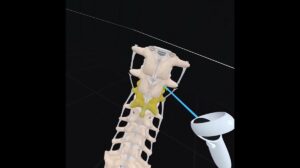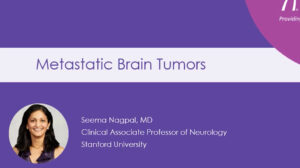NEW YORK (Reuters Health) – Surgery offers the best hope for survival in patients with the rare intracranial hemangiopericytoma (HPC), researchers from San Francisco report in the August 11th online issue of Cancer.
“Whenever possible, any patient with a HPC should be referred to a tertiary referral center with expertise in achieving gross total resections (GTR) of these challenging tumors,” Dr. Andrew T. Parsa from University of California, San Francisco, California told Reuters Health by email. “More research is needed to determine the best adjuvant treatment; however, GTR should be the first step in management.”
Dr. Parsa and colleagues report their 21-year experience treating 40 consecutive patients with intracranial HPC. Five patients were excluded from the analysis due to lack of complete information on treatment or follow-up.
All patients underwent surgical resection as initial therapy, with GTR achieved in 16 (46%) cases and subtotal resection achieved in 19 (54%) cases.
Nine of 16 GTR cases and 13 of 19 STR cases received adjuvant external beam radiotherapy, Gamma Knife radiosurgery, or proton beam therapy.
HPC recurred in 19 patients (54%) after a median 5 years. Progression-free survival rates were 96% at 1 year, 49% at 5 years, and 28% at 10 years.
Extracranial metastasis developed in 7 patients, and 4 of the 7 patients with extracranial metastasis died.
Tumor size of 6 cm or more and location of HPC at locations other than the skull base were associated with earlier recurrence.
Treatment with adjuvant radiation was more important than extent of resection in increasing the time to recurrence, whereas extent of resection was more important than adjuvant radiation in extending overall survival.
Median survival was 18.8 years for patients receiving GTR compared with 8.75 years for patients receiving STR with adjuvant radiation. Among GTR and STR patients, overall survival did not differ between those receiving and not receiving adjuvant radiation.
“Rare primary CNS tumors such as HPC continue to be a challenge for practitioners,” Dr. Parsa said. “Our goal over the past several years has been to critically analyze the published literature, identify unanswered questions, and then attempt to answer these questions with our own patient data sets. Ultimately, however, multicenter clinical trials designed to prospectively evaluate patients treated in various manners will be required to identify the optimal treatment paradigms.”
“The best first step for any practitioner faced with a patient with a rare CNS tumor is to seek advice from providers at tertiary referral centers who have years of experience and expertise in multi-modality management,” Dr. Parsa concluded.
Reference:
Intracranial hemangiopericytoma
Cancer 11 August 2011.




